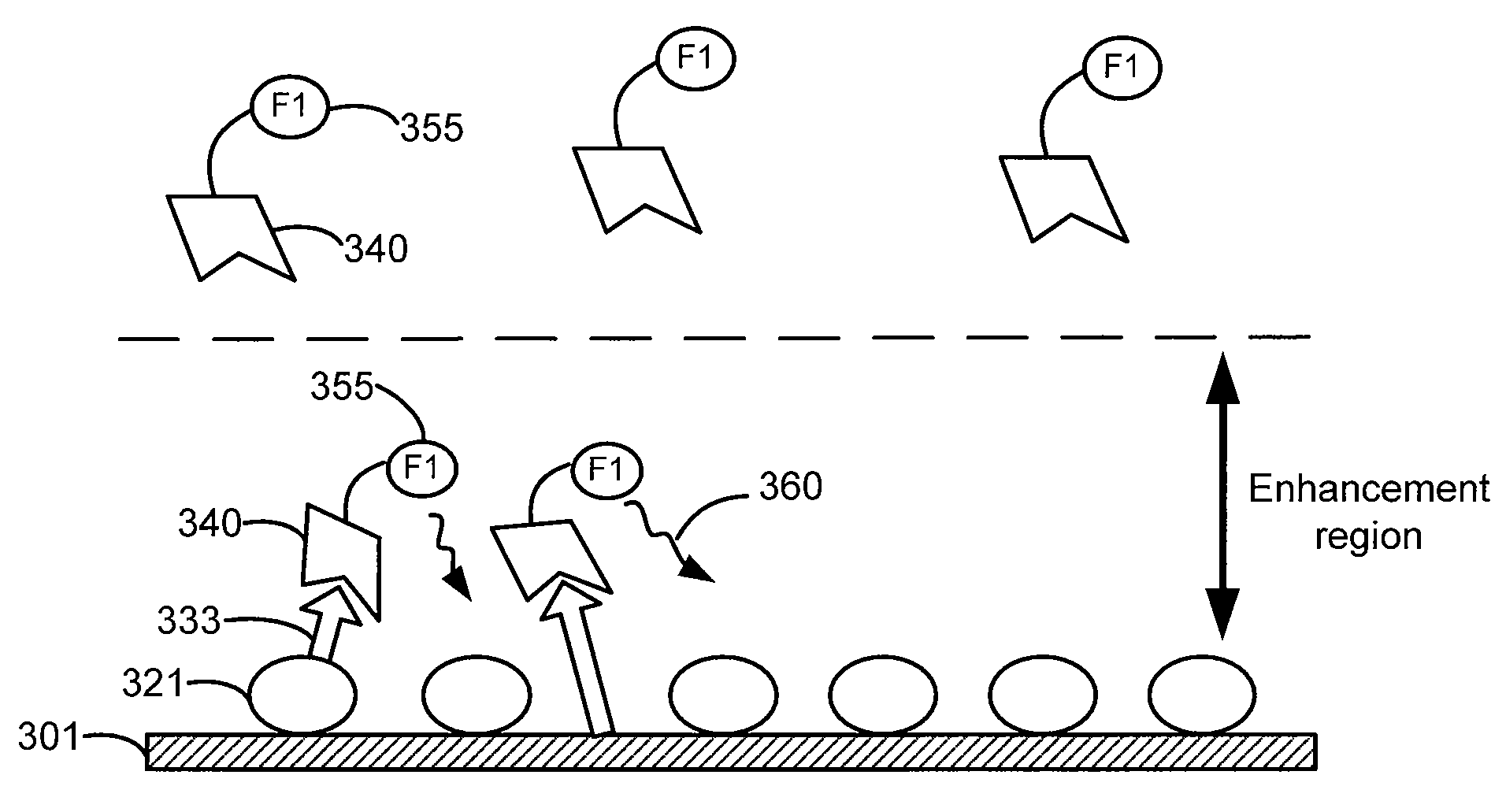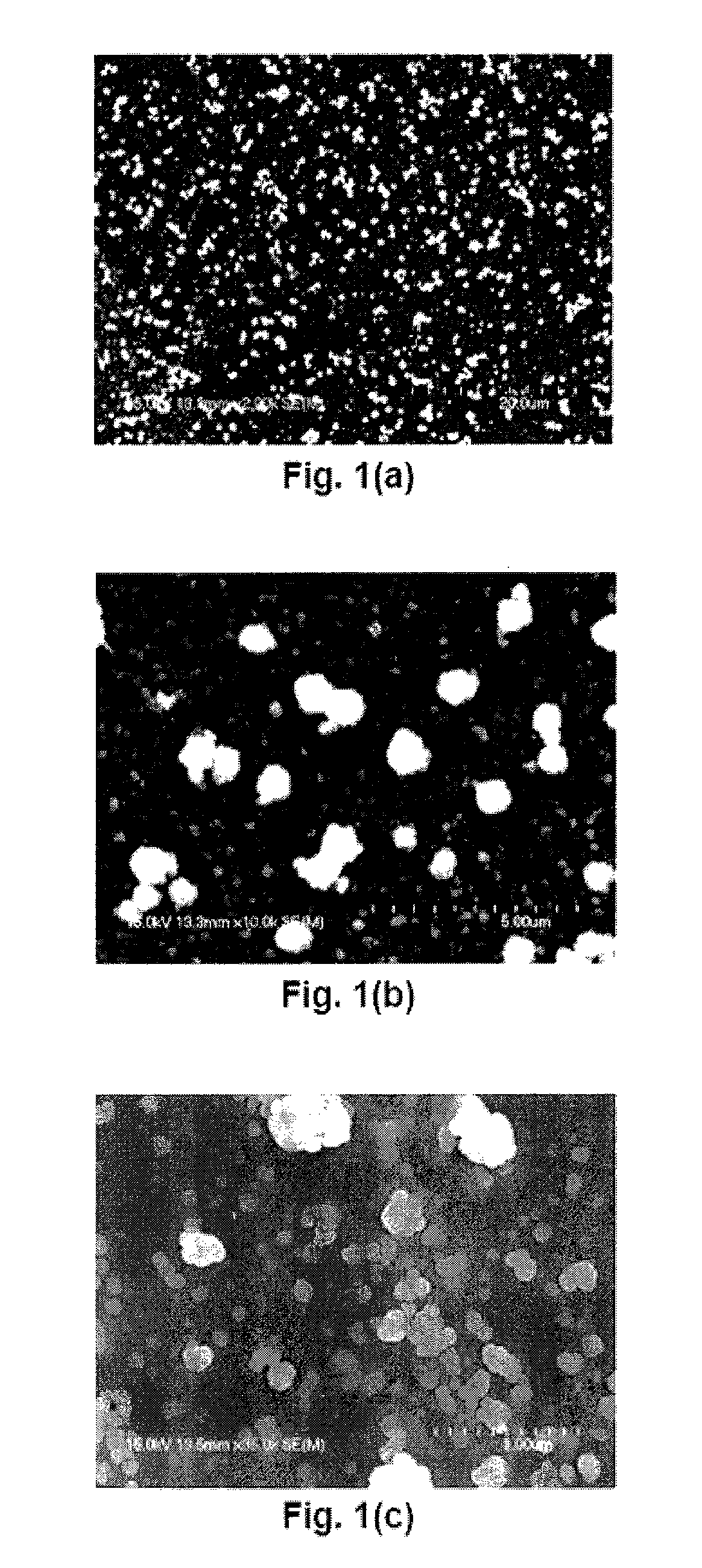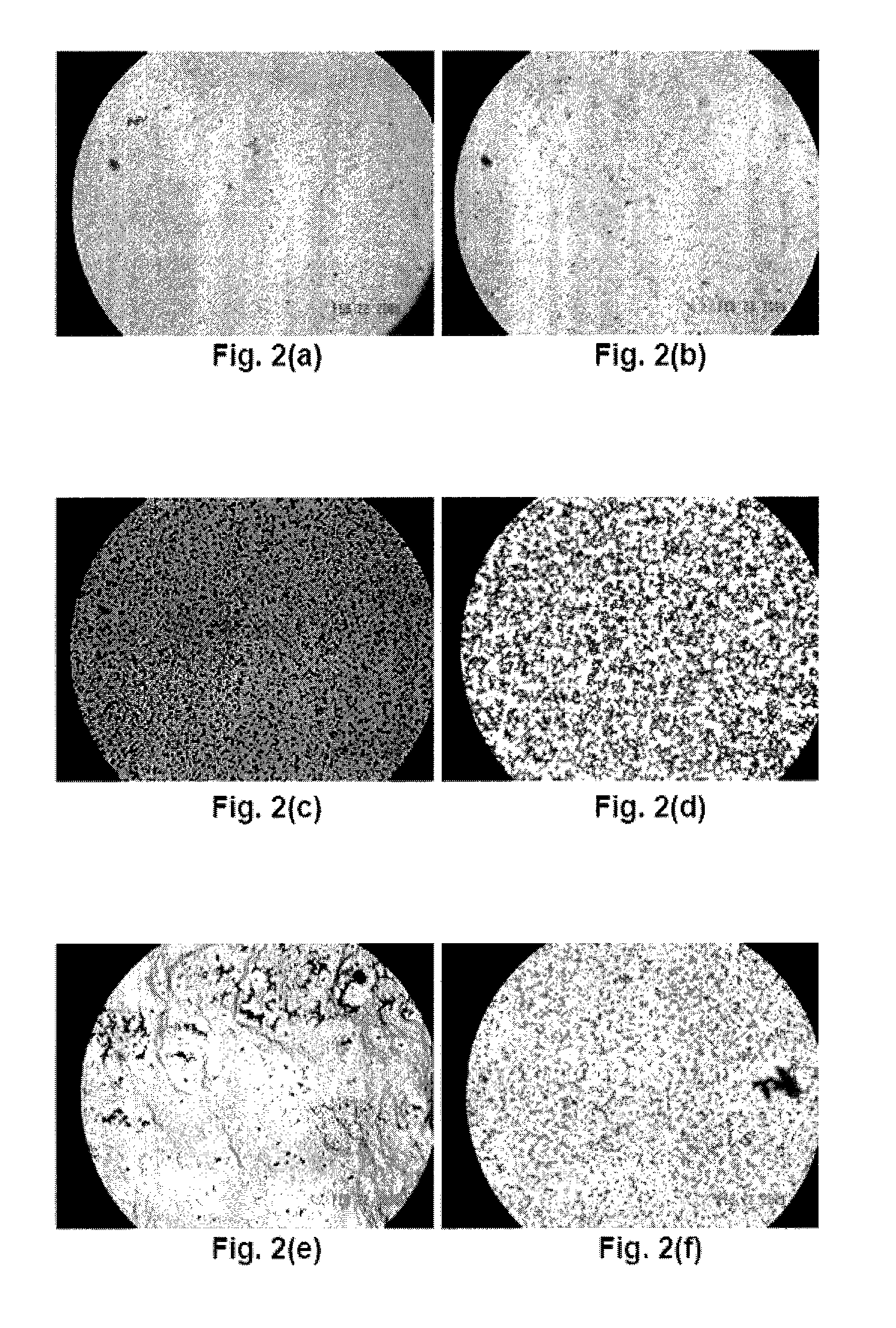Colloidal metal aggregates and methods of use
- Summary
- Abstract
- Description
- Claims
- Application Information
AI Technical Summary
Benefits of technology
Problems solved by technology
Method used
Image
Examples
example 1
Metal Enhanced Fluorescence of IRDye® 800CW or Alexafluor® 680 with Silver Metal Colloidal Aggregates Over Dye Alone
[0148]FIG. 7a shows various colloid preparations prepared by concentrating silver colloids and initiating controlled aggregation on the concentrated colloids by mixing with 0.1× phosphate buffered saline, spotted on glass. Each colloidal aggregate preparation was then spotted (in duplicates) with either IRDye® 800CW or Alexafluor® 680 labeled streptavidin. Dye-labeled streptavidin was also spotted alone (in duplicates) without the presence of colloid. The dye-spotted mixtures were then irradiated at the excitation wavelength of either IRDye® 800CW or Alexafluor® 680 and the fluorescence emission was recorded. Fluorescence enhancement of IRDye® 800CW or Alexafluor® 680 in the presence of a colloidal aggregate over each dye alone was graphed and is shown in FIG. 7b. (Fluorescence Enhancement=Integrated intensity of a colloid / dye mix divided by the integrated intensity of...
example 2
Metal Enhanced Fluorescence of IRDye® 800CW on Plain Glass and Silaniated Glass
[0149]FIG. 8 is a bar graph that shows the fluorescence enhancement of IRDye® 800CW labeled streptavidin that is spotted over colloid mixtures which have been dried on glass slides. The results show that if a salt solution (0.1×PBS in this instance) is not used for the preparation of a colloidal aggregate nor is it present in the dye-labeled streptavidin solution that is spotted on a colloid aggregate, then fluorescence enhancement of the resultant dye / colloid mixture is only about 5-10 fold over the dye alone (see, FIG. 8 in the column where the x-axis is labeled cH2O-dH2O). However if the salt solution, i.e., 0.1×PBS, is added, either in the dye solution or colloid aggregate, then fluorescence enhancement is increased dramatically, on the order of about 25 to 45-fold on plain glass and from 15 to 25-fold on silaniated glass. The x-axis in the chart in FIG. 8 indicates whether a colloid aggregate and / or ...
example 3
Metal Enhanced Fluorescence of IRDye® 800CW on Membrane with Silver Metal Colloidal Aggregates Over Dye Alone
[0150]FIG. 9A shows various colloid preparations prepared by concentrating silver colloids and doing a controlled aggregation on the concentrated colloids by mixing them with 0.1× phosphate buffered saline, and then spotted on nitrocellulose membrane. Each colloidal aggregate preparation was then spotted (in duplicates) with either IRDye® 800CW or Alexa Fluor® 680 labeled strepavidin (901=Colloid A; 915=Colloid B; 922=Colloid F; 933=colloid aggregates alone). Dye-labeled streptavidin was also spotted alone 955 (in duplicates) without the presence of colloid preparation. The dye-spotted mixtures were then irradiated at the excitation wavelength of either IRDye® 800CW or Alexa Fluor® 680 and the fluorescence emission was monitored. Fluorescence enhancement of IRDye® 800CW or Alexa Fluor® 680 in the presence of a colloidal aggregate over each dye alone was graphed and is shown i...
PUM
| Property | Measurement | Unit |
|---|---|---|
| Time | aaaaa | aaaaa |
| Diameter | aaaaa | aaaaa |
| Diameter | aaaaa | aaaaa |
Abstract
Description
Claims
Application Information
 Login to View More
Login to View More - R&D
- Intellectual Property
- Life Sciences
- Materials
- Tech Scout
- Unparalleled Data Quality
- Higher Quality Content
- 60% Fewer Hallucinations
Browse by: Latest US Patents, China's latest patents, Technical Efficacy Thesaurus, Application Domain, Technology Topic, Popular Technical Reports.
© 2025 PatSnap. All rights reserved.Legal|Privacy policy|Modern Slavery Act Transparency Statement|Sitemap|About US| Contact US: help@patsnap.com



